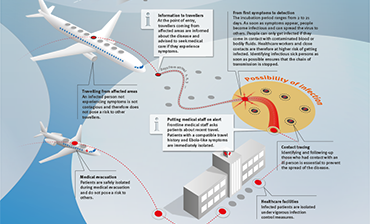

Nausea, vomiting and diarrhea with blood and mucus, conjunctivitis, and sore throat soon follow. In the case of Ebola, clots are concentrated in the liver, spleen, brain, and other internal organs, forcing capillaries to bleed into surrounding tissue. Within a few days the virus causes a condition known as disseminated intravascular coagulation, which is marked by both blood clots and hemorrhaging. Infected persons may develop fever, severe headaches and muscle aches, and loss of appetite. The onset of illness is sudden and harsh. In addition, a small percentage of Ebola-infected individuals may remain asymptomatic such persons may unknowingly carry and spread the virus.Įbolaviruses have an incubation period of 2 to 21 days. The surfaces of bodies of deceased victims remain infectious for more than a week. Burial rituals that involve close contact with the body of a person who has died from the disease also can result in the spread of Ebola. Unsanitary conditions and lack of adequate medical supplies may be factors in the spread of the disease. In men, the virus may remain infectious in semen for as long as two months following return to health. The virus has also been detected in the organs of patients after recovery from the fever. Ebola can be transmitted through contact with infected blood and bodily fluids as well as through contact with surfaces or objects contaminated by those fluids. Among the suspected reservoirs for Ebola are bats, primates, rodents, and insects that inhabit tropical forests in Africa and Asia. Viral hemorrhagic fevers similar to Ebola typically are carried by arthropods and rodents, but the natural reservoirs for ebolaviruses are yet to be discovered. It is not known how the viruses attack cells it has been postulated that they produce proteins that suppress the immune system, allowing reproduction of virus to continue unhindered.

The virion (virus particle) contains one molecule of noninfectious single-stranded RNA (ribonucleic acid). Viewed through an electron microscope, ebolaviruses appear as long filaments, sometimes branched or intertwined. SpaceNext50 Britannica presents SpaceNext50, From the race to the Moon to space stewardship, we explore a wide range of subjects that feed our curiosity about space!.Learn about the major environmental problems facing our planet and what can be done about them! Saving Earth Britannica Presents Earth’s To-Do List for the 21st Century.100 Women Britannica celebrates the centennial of the Nineteenth Amendment, highlighting suffragists and history-making politicians.
#Ebola transmission how to#

Britannica Classics Check out these retro videos from Encyclopedia Britannica’s archives.Britannica Explains In these videos, Britannica explains a variety of topics and answers frequently asked questions.


 0 kommentar(er)
0 kommentar(er)
